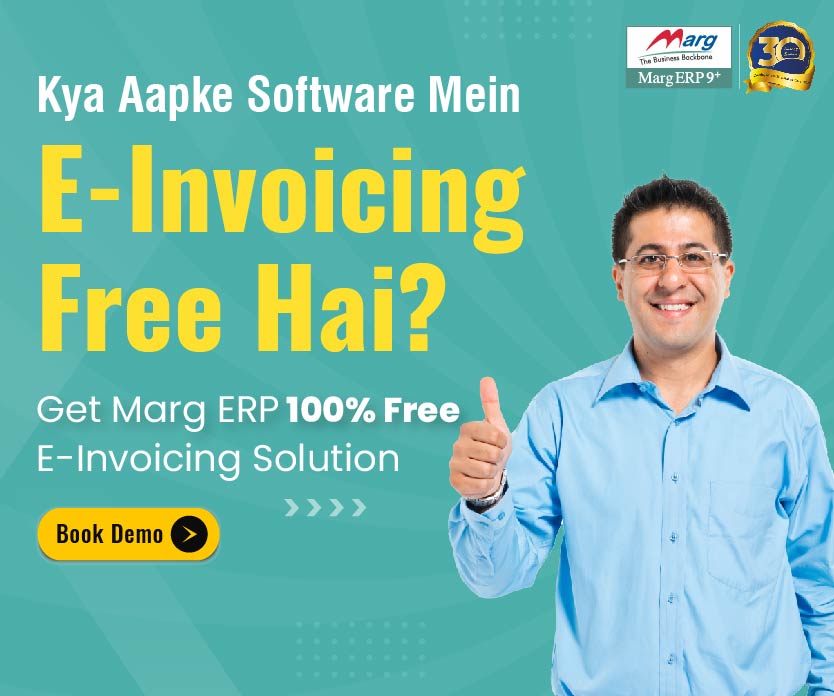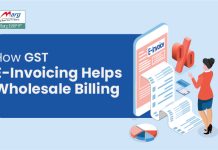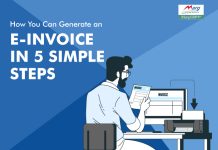Recent Updates on e-Invoicing:
16 August 2022
An important statement was made on August 16, 2022, by the Central Board of Indirect Taxes and Customs (CBIC), indicating that taxpayers whose annual turnover exceeds Rs. 10 crores are qualified to use the e-invoicing system. The rule will be effective from 1st October 2022.
4th July 2022
According to a government official, in order to lower the barrier from the existing Rs 20 crore, the government intends to make GST e-invoicing mandatory for businesses with a turnover of Rs 10 crore and higher from 1-10-2022.
24th February 2022
According to Notification No. 1/2022, the e-Invoicing system will be made available to businesses with an annual turnover of more than Rs. 20 crore and up to Rs. 50 crore as of April 1, 2022.
30th June 2021
The CBIC has issued a notification proposing to waive the penalty imposed for non-compliance with dynamic QR code regulations for B2C invoices between December 1, 2020, and September 30, 2021.
1st June 2021
A government department and local authority are exempt from the e-invoicing system, according to CBIC’s Central Tax Notification No. 23, dated June 1, 2021.
30th March 2021
The CBIC has published a notification to waive the fine for failing to follow the rules for dynamic QR codes for B2C invoicing between 1 December 2020 and 30 June 2021, provided that the person in question complies with the notification’s requirements starting on 1 July 2021.
Article Content:
In India, E-invoicing is all geared up to face B2B transactions. The GST Council has approved the introduction of ‘E-invoicing’ or ‘Electronic Invoicing’ to report Business to Business (B2B) invoices to the GST System and the Invoice Registration Portal (IRP) will play a vital role. It generates and assigns Invoice Reference Numbers (IRN) to every GST invoice.
Initially, the E-invoicing system will be available on an optional basis from the month of January 2020.
Invoice Registration Portal (IRN)
Invoice Registration Portal is a system in which B2B invoices are electronically authenticated through Invoice Registration portal which validated every invoice credit/debit note and assigning them Invoice Reference Numbers (IRN) and QR code which will be further use by GSTN or EWay Bill portal which will ease and make the compliance process simpler.
Process of e-invoicing
STEP 1
Once the invoice is generated by an accounting or billing system according to an e-invoice scheme that is published and adheres to the mandatory parameters, the billing software should be capable of generating a JSON file because IRN only supports JSON of the Invoice.
STEP 2
After generating JSON of the invoice seller is required to upload the JSON of the e-invoice into the Invoice Registration Portal (IRP). It may be uploaded directly on the IRP or through third-party apps.
STEP 3
Supplier generates hash/IRN (Invoice Reference Number) of JSON of the invoice, parameters which will be used to generate a hash/IRN are:
- Supplier’s invoice number
- Supplier GSTIN
- Financial year (YYYY-YY)
STEP 4
When a JSON file is uploaded to Invoice Registration Portal (IRP), IRP will check the hash from the GST System to ensure that the same invoice from the same supplier will not be uploaded again. After receiving confirmation, IRP will add a signature as well as a QR code to JSON. The QR code will contain GSTIN details of the seller/buyer, number of invoice, date of invoice, value of invoice, HSN codes, number of item line, etc. The hash generated by IRP will become the Invoice Reference Number (IRN) of the e-invoice which is unique to each invoice.
STEP 5
IRP will generate JSON with a digital signature, Invoice Reference Number and QR Code. Invoices will also be sent on their email address of the buyer and seller as mentioned in the invoice.
E-Invoicing in E-Way Bill
The invoice is uploaded to the Invoice Registration Portal which will automatically be shared with the GST system and will be validated & digitally signed with Invoice Reference Number (IRN).
It will update the seller ANX-1 and buyer ANX-2, the liability of the taxpayer will be automatically calculated.
The Invoice Registration Portal electronically authorises the E-Way bill system to create Part-A of the e-way bill using invoice data.
Benefits of e-invoicing to Taxpayers
- No Multiple Entries:
With the help of e-invoicing, there is no need to enter multiple entries by buyer and seller. E-invoicing data is directly sent to the buyer and seller account once they start generating e-invoicing which will also help in to reduce reporting timing in multiple formats.
- For Better Reconciliation:
As the data from e-invoicing is sent to the buyer, the buyer can reconcile with order and accept or reject it on a real-time basis.
- For Less Error or avoid Duplication:
E-invoicing will decrease the issues of input credit and avoid the change of bill duplication with the help of Invoice Reference Number which is unique to each invoice.
- Data not limited to GSTR-1
E-invoice will eliminate multiple entries while filing GSTR-1 and can use the same data for issuing e-way bills, and one can also use the same data while filing ANX-1 viz. sales and ANX-2 viz. purchase register.
- Less fake invoices
In the e-invoicing process all invoices validate through the government portal and send automatically to buyers and sellers in real-time that reduces the chance of generating fake invoices.
Benefits of e-invoicing to Government
E-invoicing allows the government to completely track all the B2B invoices which will reduce the fraudulent invoices submitted to claim input tax credit. With e-invoicing, the government keeps all the records and can easily conduct the Tax liability check. The primary aim of the e-invoice is to verify the Tax evasion and fraudulent invoices submission.
Direct Invoice Generation
E-invoice is not generated from a government tax portal. It is implemented to ensure that the invoices will be generated, in a particular standard format by taxpayers by their own accounting or billing software. Taxpayers must follow the standard format for invoice generation which can be easily read by another system. If the details are in a proper format, it will improve the process of filing returns.
Invoice Registration Portal is made to record the details of the invoices only and not to generate the e- invoices.
GSTN has provided eight free accounting or billing software that assists you to generate JSON of the invoice you can also use other software which provides the same functions.
Free Download E-invoicing Software
Modes of Registering for e-invoicing
- API based Registration:
In this mode, large business and accounting software interact and share the relevant JSON and get Invoice Registration Number through their software, it validates and generates one IRN request at a time, so it can be used in bulk requirements like the E-Way Bill generation system.
- Web-based Registration:
In this mode, once the business generates an e-invoice invoice can be uploaded onto the Invoice Registration Portal for validating or generating the Invoice Reference Number.
Web IRP: National Informatics Centre (NIC)
- Mobile based Registration:
In this mode, IRP will provide a Mobile App so taxpayers can process the invoice
- SMS based Registration:
In this mode, Taxpayers can enter invoice details in a specific format and send it to the Invoice Registration Portal via SMS for validating and processing.
- Offline tool-based Registration:
This GSTN will provide an offline tool to where you can enter the invoice date and generate the JSON file which can be uploaded in Invoice Registration Portal.
- GST Suvidha Provider based Registration:
In this Taxpayers consult with GST Suvidha Providers to get registered and help with compliance in reference to e-invoice.







Like!! Really appreciate you sharing this blog post.Really thank you! Keep writing.